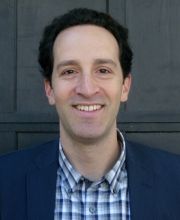Researchers explore promise of gene therapy
Scientists explore innovative delivery systems that might one day treat hemophilia and other blood diseases
From new and refined viral vectors and ultrasound microbubbles to high-pressure fluid injections and CRISPR/Cas9 gene editing, researchers around the world continue to search for delivery systems that can help realize the longstanding promise of gene therapy, said two noted leaders in the field Sunday, December 6 at the 57th American Society of Hematology (ASH) Annual Meeting in Orlando, Florida.
For many diseases, the gene-mutation culprits are known and inserting different genes in affected cells’ DNA could help, and possibly offer a cure. That much has been known for decades. The challenge is how to do deliver the therapeutic genes where they need to go.
Related:Midostaurin extends survival among some AML patients: Study

Dr. Nienhuis“The field has a checkered history,” acknowledged Arthur W. Nienhuis, MD, department of hematology, St. Jude Children’s Research Hospital, Memphis, Tenn. “There was a jump into the clinic in the 1990s but those trials were largely unsuccessful.”
Nienhuis and copresenter Daniel E. Bauer, MD, PhD, assistant professor of pediatrics, Harvard Medical School, Dana-Farber Cancer Institute, Boston, spotlighted several advances in gene therapy, that had been presented at the ASH meeting.
Using viruses to shuttle therapeutic genes into target cells is an area of continued research, employing lentiviruses, adenoviruses, and foamy viruses. Lentiviral vector work has seen “recent, rather dramatic successes” at Boston Children’s Hospital, noted Nienhuis. “The lentiviral vectors have significantly improved their safety, but there are still dose-dependent thrombocytopenias.”
NEXT: Nonviral approaches

Dr. BauerNonviral approaches have proliferated as well, including a novel hydrodynamic gene delivery injection that uses high-pressure fluid injections of DNA for lab animal models of hemophilia. Hydrodynamic injections of full-length transgenes in bacterial transposons has yielded durable production of the proteins encoded in those genes in mice and dogs’ livers, for example. But for now, the large volumes of injected fluid required, and resulting tissue injury, make clinical testing, problematic, Nienhuis noted.
Another emerging nonviral delivery system for gene therapy, spotlighted by Nienhuis, is the use of ultrasound to target where DNA-ferrying microbubbles burst to deliver their gene cargos. Lead study author Shuxian Song, PhD, of Seattle Children’s Research Institute, reported at the ASH meeting that ultrasound/microbubble approaches “can significantly enhance gene transfer efficiency and serve as an efficient nonviral physical delivery strategy” for gene therapy. The researchers successfully delivered a therapeutic plasmid with blood-clotting factor VIII genes into the liver of hemophilic mice, achieving circulating VIII activity of 4% to 40% in the animals, Nienhuis noted.
Related:Aetna expert explores new cancer payment methodology
“The results indicate that ultrasound/microbubbles mediated gene transfer is highly promising for efficient and safe gene therapy of hemophilia A,” Song and colleagues reported.
Much of the work is preclinical, involving animal models, but the ASH meeting also saw a report about the first clinical application of a type of chimeric antigen receptor (CAR)-19 T cell against childhood cancer in an 11-month-old girl with relapsed acute lymphoblastic leukemia after hematopoietic stem-cell transplantation.
“We received a request for therapy on a compassionate basis for an infant,” reported lead author Waseem Qasim, PhD, professor of cell and gene therapy, Institute of Child Health, University College London. The infusion of the CAR-19 T cells “has induced molecular remission where all other treatments had failed,” Qasim reported. This first-in-man use of engineered cells against a leukemia “provides early proof-of-concept evidence for a ready-made T cell strategy that will now be tested in early-phase clinical trials.”
Breaking Down Health Plans, HSAs, AI With Paul Fronstin of EBRI
November 19th 2024Featured in this latest episode of Tuning In to the C-Suite podcast is Paul Fronstin, director of health benefits research at EBRI, who shed light on the evolving landscape of health benefits with editors of Managed Healthcare Executive.
Listen
CAR T-Cell Therapy Cuts Costs, Reduces Treatment in Mantle Cell Lymphoma
March 13th 2025In a real-world study, researchers found this data by comparing treatment patterns, healthcare resource utilization, and costs between patients receiving CAR T-cell therapy and those treated with the non-CAR T standard of care.
Read More
In this latest episode of Tuning In to the C-Suite podcast, Briana Contreras, an editor with MHE had the pleasure of meeting Loren McCaghy, director of consulting, health and consumer engagement and product insight at Accenture, to discuss the organization's latest report on U.S. consumers switching healthcare providers and insurance payers.
Listen